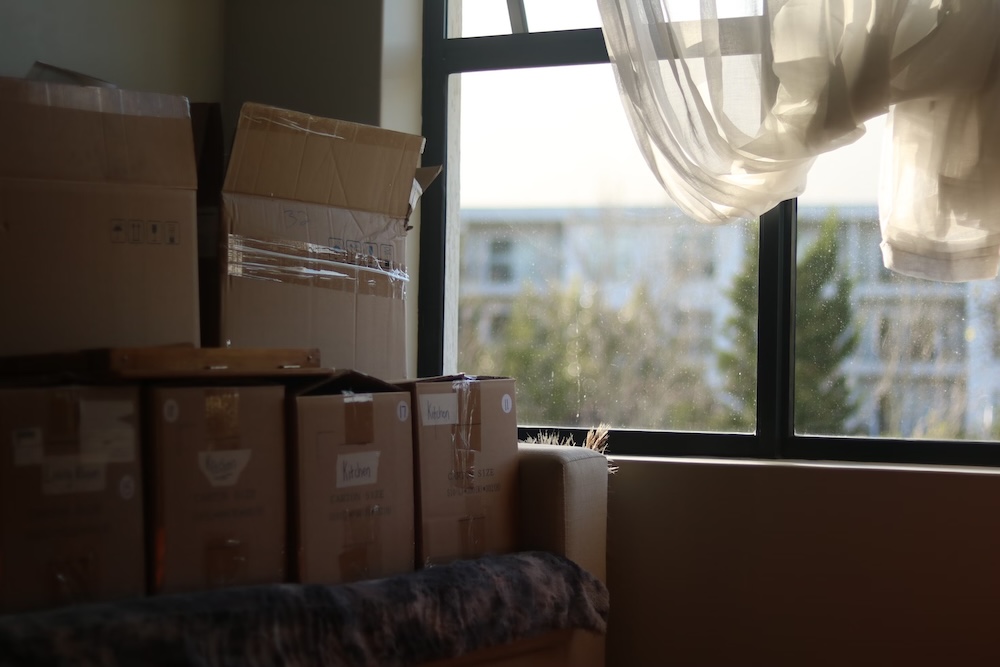Packing Tips for Moving: Pack Like a Pro

Packing for a move always feels like embarking on a thrilling adventure — the one where all belongings and memories get carefully bundled together and transported to a new place. It’s a multitasking job that requires not only physical strength, but also logical thinking and a bit of creativity. We know that all of this may look complicated at first glance, but don’t give in to emotions. You can easily turn this process into an enjoyable experience, and we are here to help!
As the saying goes, «A journey of a thousand miles begins with a single step», and the first step to move is mastering the art of packing. With a ready-made checklist, you can turn the chaos of packing into a well-organized process. In this article, we present 8 essential packing tips designed to guide you through each step of your relocation, ensuring that everything goes as it was planned in your head. So, grab our checklist, roll up your sleeves, and let's embark on this packing adventure together!
Make a To-Do List
The importance of a correctly compiled to-do list cannot be overstated. It’s like a roadmap in the hands, which can guide you through each twist and prevent undesirable consequences.
Before you even think about starting to pack all items, take a moment to sit down and create your ultimate moving checklist. It should consist of a step-by-step description of what you need to do in a certain period of time before the big day of the move arrives.
4 Weeks Before Moving
- Go through each room to figure out what belongings you don’t need anymore. Donate or sell items which are in good condition. In this way, you’ll kill two birds with one stone: you’ll do a good deed and save money on the move, since its cost directly depends on the amount and weight of cargo.
- Stock up on boxes, tape, bubble wrap, markers, and other packing materials. Remember that it’s better to have more materials than you think are required, rather than finding out you have missed something at the very last moment.
3 Weeks Before Moving
- Start with boxing up belongings from the basement, garage, and attic. Move to the linen closet and the laundry room for packing up seasonal clothing.
- Pack the small items you won't need in the coming weeks. This includes holiday decorations, books, collectibles, etc.
2 Weeks Before Moving
- Empty and clean the kitchen appliances you intend to bring to the new place.
- Focus on packing the items you use less frequently, such as spare linens, towels, and guest room furnishings.
- Disassemble and pack bulky furniture that you can be dispensed with until moving day.
1 Week Before Moving
- Pack up the rest of your belongings, including bedding and electronics.
- Disassemble the remaining furniture that needs to be moved.
- Prepare a survival kit with clothing for the next few days, toiletries, and personal care items. This kit will ensure you have everything you need easily accessible during the move.
- Pack all important documents separately in a folder and keep it on hand to prevent the accidental loss.
Utilize Wardrobe Boxes
Such boxes are a game-changer when it comes to packing clothes. These specially designed packing supplies allow you to transport all hanging garments directly from the closet to the box without having them to remove from the hangers. This not only saves time, but also keeps your clothes wrinkle-free and ready to wear upon arrival.
We recommend to stock up on a few wardrobe boxes at least, so you can pack all the most important and expensive clothes.
These tips will help make the most of wardrobe boxes:
- Pack clothes by season and its type to make the process of unpacking more organized.
- Fill the bottom of the wardrobe box with shoes, bags, or other non-hanging items to maximize every inch of space.
- Label each box with its contents, so you can easily understand what is inside.
Optimize the Space in Your Moving Boxes
Maximizing the space in your moving boxes isn't just about fitting more stuff. It's like crafting a puzzle where every piece has its place.
Follow 5 simple rules to make your move more cost-effective:
- Take apart larger items like furniture or appliances to make them easier to pack and transport.
- Put smaller items inside the larger ones to fill the empty spaces.
- Place heavier items at the bottom of the box and lighter items on top to prevent any kind of damage and make the boxes easier to carry.
- Use soft items like towels and blankets to fill gaps between larger belongings. This helps to maximize the space and provide cushioning.
- Make sure the boxes are filled to the top in order to prevent them from collapsing when stacked on top of one another.
Label All Moving Boxes
Labelling all boxes may take some additional time. And yet, you shouldn’t skip this stage, since it can make the whole unpacking process much easier.
Use labels and markers or a colour-coding system to simplify identification further, as well as indicate the boxes that contain fragile items by writing «Fragile» or «Handle with care». By clearly marking each box with its contents and room destination, you can ensure gentle handling of individual items and quickly place cargo in the correct rooms upon arrival.
In the end, make a detailed list of the total number of boxes per room in a notebook. In such a way, you’ll be able to keep abreast, ensuring nothing is lost during transit.
Buy Necessary Moving Tools
Do you want your boxes full of belongings to break due to the lack of packing tape? Or do you have a wish to rush in hurry on the «Day X», because you don’t have enough permanent markers to label all boxes? We’re sure that your answer is «no», that’s why buying moving equipment is the cornerstone of any planning of the move.
Here’s a short list of basic tools what you’ll need:
- Stretch wrap to bundle items together.
- Strong tape to seal your boxes with maximum security and markers to label each box.
- Basic tools like screwdrivers, wrenches, and pliers for disassembling and reassembling furniture.
- Moving blankets to protect every piece of furniture and fragile items from scratches and damage.
- Sturdy dolly to move heavy furniture and large appliances.
- Sharp box cutter for easy opening and breaking down of boxes.
Also, don’t forget about a pair of work gloves to protect your hands from cuts, scrapes, or blisters when handling rough or sharp-edged items and reduce the risk of dropping slippery or heavy objects.
Prepare a Moving Day Bag With Necessities
Moving can be exhausting, and after a long day of hauling belongings, the last thing you’ll want to do is digging into the boxes in search of necessary items. You can solve the problem by preparing a moving day bag, which should include the following things:
- A change of clothes for each member of the family (an extra set of underwear and socks, pyjamas, etc.).
- Basic toiletries like toothbrushes, toothpaste, soap, shampoo, and hairbrushes.
- Bedclothes to make your bed immediately after moving.
- Easy-to-eat snacks, bottled water, and perhaps some instant coffee or tea to keep you energized throughout the important day.
- Chargers for the phones and electronics you need every day.
- First-aid kit with band-aids, antiseptic wipes, pain relievers, and other medical supplies.
Hire a Cleaning Service
If you leave a rental home, this is an important stage, which many ignore as a result of their lack of understanding on the matter. Firstly, spotless accommodation ensures you get your full security deposit back by meeting your landlord's cleanliness standards. Secondly, leaving a clean home is a considerate gesture to the new residents, providing them with a fresh start.
It works this way during the home selling process as well — a clean space always leaves a positive impression on the new owners and real estate agents.
Photograph All Items in Moving Boxes
By taking pictures of belongings in moving boxes, you add an extra layer of security and organization to the move.
In case of loss or damage during the transit, having photographic evidence can make filing insurance claims much smoother and credible. Moreover, photographs are a good addition to labelling that helps you quickly identify the contents of each box without having to open them.
Conclusion
Packing for a move can seem overwhelming. Nevertheless, the right strategies can make it into a manageable process, if you’ll know where to start. No matter what is awaiting over the horizon, following our 8 packing tips — the right method to get ready for the challenge of moving and ensure that your belongings are well-protected.
However, if the thought of packing still feels daunting for you, remember that professional movers are always available to take the burden off your shoulders. They can do all the job, allowing you to focus on the excitement of the new adventure. Check out a list of moving companies, which are represented on our platform, to find a suitable option for you in the best conditions.
Other articles

10 Questions to Ask when Hiring a Moving Company

Your Go-To Checklist for Long Distance Moving

